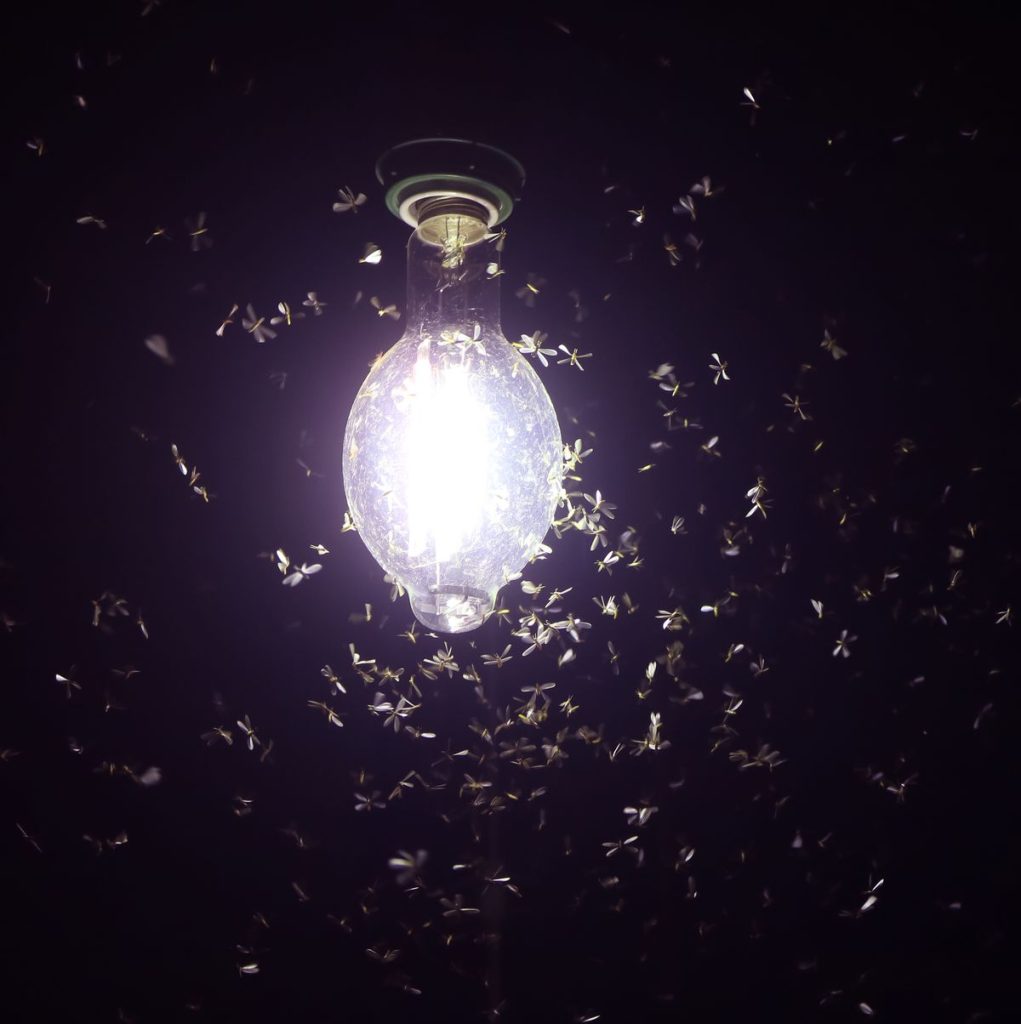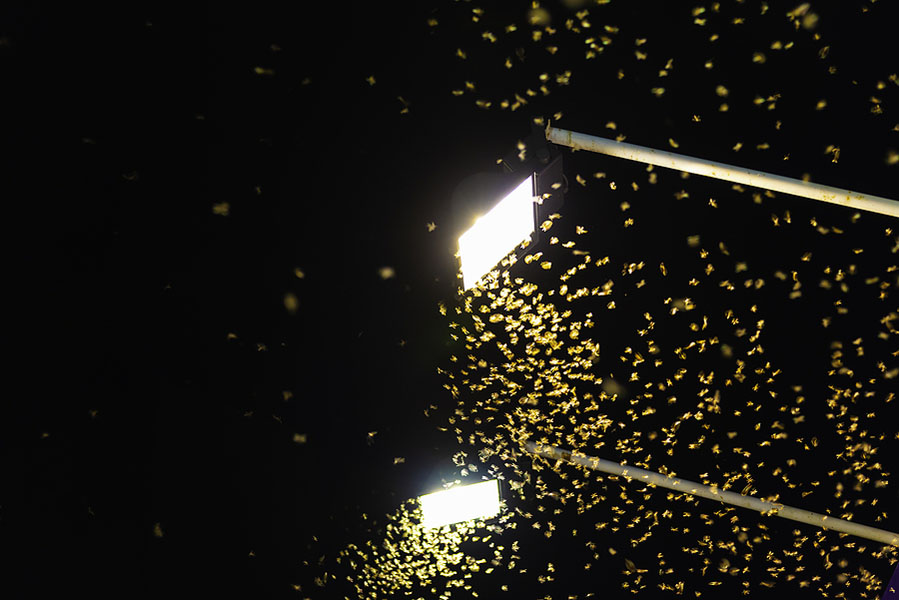Flies are attracted to light sources due to their innate phototaxis behavior. When lights are off, surrounding darkness makes even faint light sources appear brighter, drawing flies towards them.
Flies are notorious for their constant buzzing and erratic behavior, especially when it comes to light sources.
It is a common phenomenon to witness flies flying around lights, even when they are turned off. This behavior has puzzled many individuals, leaving them questioning the reasons behind this seemingly illogical attraction.
So, why do flies fly around lights that are off? While there is no definitive answer, several theories attempt to explain this peculiar fly behavior.
From their unique vision capabilities to their search for warmth and potential food sources, understanding why flies are drawn to lights that are off can shed light on their mysterious behavior and offer insights into their evolutionary adaptations.
Why Do Flies Fly Around Lights That Are Off?
Flies are often buzzing around lights, even when turned off. This puzzling behavior can leave us wondering why these tiny insects are drawn to something that does not emit any light or heat.
Understanding the reasons behind this peculiar attraction can shed light on the fascinating instinctual behaviors of flies and provide insight into their biology and sensory capabilities.
So, why do flights fly around lights that are off?
Flies exhibit a behavior called phototaxis, a natural attraction to light. When lights are off, the surrounding darkness magnifies any source of illumination.
Even faint ambient light becomes more pronounced in the absence of other light sources. Flies, inherently drawn to brightness, navigate using weak cues for tasks like finding food and mates.
This instinct evolved to guide them in open environments, but artificial lights can confuse this behavior. The flies’ relentless circling around inactive lights is a result of their ingrained response to the heightened light contrast.
This phenomenon demonstrates how an innate trait, fine-tuned by evolution, can persist and occasionally misfire in our modern, artificially illuminated world.
Tips for Reducing Fly Populations Indoors

Maintaining a fly-free indoor environment is essential for both comfort and health. Flies are not only nuisance pests but also potential carriers of diseases, posing risks to human well-being.
Understanding effective methods for reducing fly populations indoors is crucial to ensure a clean and hygienic living space.
Implementing these tips can help create a more pleasant and sanitary environment, minimizing the potential health hazards of these pests.
To effectively reduce fly populations indoors, consider these tips:
Maintain Cleanliness: Regularly clean and sanitize your living space, including trash cans, drains, and pet areas, to eliminate potential breeding sites.
Seal Entry Points: Seal gaps, cracks, and openings around doors, windows, and screens to prevent flies from entering.
Do Screening: Install screens on windows and doors to keep flies and other insects out while allowing fresh air in.
Do Proper Food Storage: Store food in airtight containers and clean countertops to deny flies access to potential food sources.
Do Garbage Management: Use sealed trash cans and dispose of garbage promptly. Keep outdoor trash bins away from entry points.
Use Natural Repellents: Place fly-repellent plants like basil, mint, or lavender indoors. Citrus-scented cleaners can also deter flies.
Use Light Traps: Use light traps or fly zappers in darker areas to attract and capture flies.
Use Flypaper or Traps: Hang flypaper or use sticky traps to catch flies.
Set up Vinegar Traps: Set up vinegar traps by mixing the apple cider vinegar, dish soap, and water to attract and trap flies.
FAQs
Are all types of flies attracted to lights?
No, not all types of flies are attracted to lights.
Many species of flies, such as house flies and fruit flies, exhibit phototaxis and are likely to be attracted to lights, whether on or off.
Do flies fly toward any source of light?
Flies are more likely to be attracted to sources of light that are brighter in comparison to their surroundings. This is why even faint lights can catch their attention when the surrounding area is dark.
Why are flies more active around lights at night?
Flies are primarily active during the daytime, but artificial lights become more prominent in the darkness at night, making them appear even more appealing to flies.
Can flies differentiate between artificial and natural light?
Flies are primarily responding to the intensity of light rather than its source. They may not necessarily differentiate between artificial and natural light sources.
How does the phototaxis behavior benefit flies?
Phototaxis helps flies navigate in search of food, mates, and suitable habitats. In natural settings, sunlight guides them, but artificial lights can confuse this behavior.
Can I use this behavior to control fly populations?
Yes, you can use light traps to attract and capture flies. These traps mimic natural light sources and can be practical tools for fly control.
Why do flies stay near the light even if it’s harmful?
The instinctive phototaxis behavior is so strong that flies might remain near a light source, like a bug zapper, even if it’s detrimental. They are drawn to the light’s brightness despite the risks.
Do other insects exhibit similar behavior around lights?
Yes, many insects, such as moths and beetles, also display phototaxis and can be attracted to lights in a similar manner.
Are there any practical ways to reduce flies around lights?
Yes, Keeping doors and windows closed, using screens, employing bug zappers, and using light traps are the practical ways to minimize fly activity around lights indoors.
Conclusion
Flies are attracted to lights that are off due to their natural instinct to seek sources of warmth and light. They often mistake the natural sunlight or moonlight reflected on windows for a source of heat and fly towards it.
So, it’s precisely clear, “Why do flies fly around lights that are off?”
To reduce fly populations indoors, keep your windows and doors closed, use screens or fly traps, maintain cleanliness, dispose of the trash properly, and seal cracks and gaps where flies can enter.
These practices help create an environment that is less appealing to flies and discourages their presence.











